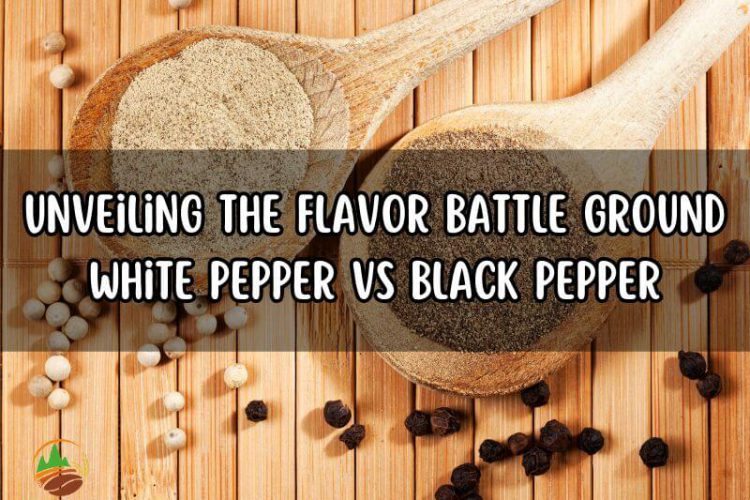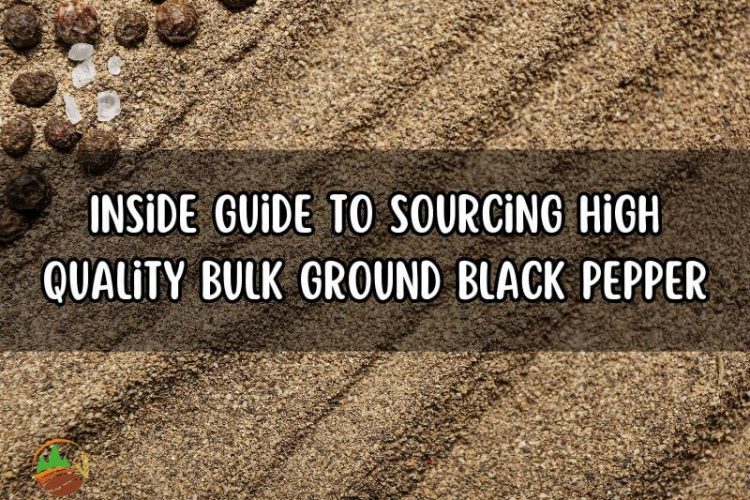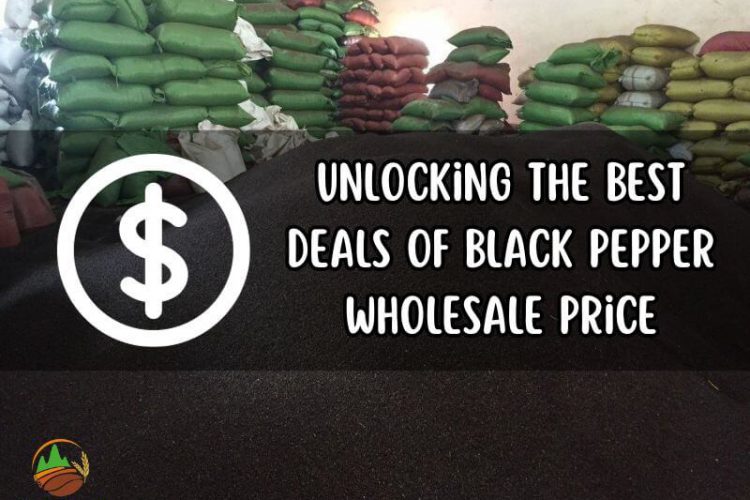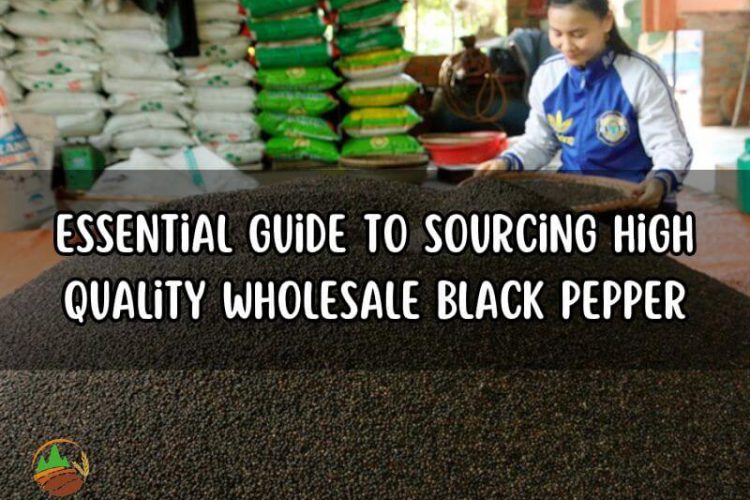If you’re a seasoned pepper importer looking to understand the dynamics behind the black pepper cost, this article serves as your essential guide. Discover the key factors that influence the wholesale price of black pepper in the global market, enabling you to make strategic purchasing decisions and stay ahead in the spice trade.
Table of contents
What are the different types of black pepper
Black pepper derives from the dried berries of the pepper plant, native to India and now cultivated in various tropical regions worldwide. Black pepper ranks as one of the most popular and commonly used spices globally, known for its pungent and slightly spicy flavor. Many different types of black pepper exist, but some of the most popular ones include:
- Whole peppercorns: These are the most common form of black pepper, available in bulk or small jars.
- Ground pepper: Ground pepper results from grinding peppercorns and is sold in shaker bottles or small jars.
- Black pepper oil: Black pepper oil, a highly concentrated form of black pepper, comes in small bottles and typically finds use in cooking in small quantities. The choice of the best form of black pepper depends on the dish you are preparing. For example, if you are making a soup or stew, using ground pepper allows for easy dissolution, while for a steak, whole peppercorns are preferred to bring out the pepper’s flavor.

The exporting countries’ current prices for black pepper
As of September 2023, the following parts provide an approximate black pepper cost in typical exporting countries.
The current price of black pepper in Vietnam
| Whole peppercorn | $1.90-$2.10 per kilogram |
| Ground pepper | $2.20-$2.40 per kilogram |
| Pepper oil | $10-$12 per kilogram |
Vietnam holds the distinction of being the world’s biggest exporter of black pepper. In 2022, Vietnam exported over 270,000 tonnes of Vietnamese black pepper, accounting for about 30% of global black pepper exports. Buyers around the world seek high-quality and boldly flavored Vietnam black pepper. Black pepper oil stands as the most expensive form due to its recent market introduction and limited demand. Moreover, black pepper oil production yields are very low in Vietnam, contributing to its high cost.

The current price of black pepper in Brazil
| Whole peppercorn | $2.18-$2.38 per kilogram |
| Ground pepper | $2.60-$2.80 per kilogram |
| Pepper oil | $12-$14 per kilogram |
Generally, the wholesale price of black pepper in Brazil has remained relatively stable in recent years. However, fluctuations have occurred due to factors like weather conditions and global market trends.
Brazil experiences a higher black pepper cost compared to other producing countries, primarily due to limited supply. While Brazil is a major producer and exporter of black pepper, its production is restricted by factors such as climate and pests, which can lead to higher prices during periods of reduced supply.

The current price of black pepper in India
| Whole peppercorn | $4.20-$4.80 per kilogram |
| Ground pepper | $4.56-$5.18 per kilogram |
| Pepper oil | $12.04-$14.41 per kilogram |
India experiences a notably high price of black pepper. The country faces robust demand driven by population growth, urbanization, and increasing incomes. However, limited supply due to climate and pest constraints, coupled with high production costs, further elevates prices. Additionally, government-imposed taxes and duties also contribute to the overall expense of black pepper in India.
The current price of black pepper in Indonesia
| Whole peppercorn | $1.89-$2.17 per kilogram |
| Ground pepper | $2.08-$2.36 per kilogram |
| Pepper oil | $10-$12 per kilogram |
Generally, the wholesale cost of black pepper in Indonesia remains competitive compared to other producing countries. However, the black pepper cost in Indonesia can fluctuate significantly due to changes in the exchange rate. When the rupiah weakens against other currencies, the cost of black pepper in Indonesia tends to rise.

Several factors affect the price of black pepper
The following factors typically affect the black pepper cost:
- Supply and Demand: The interplay between global supply and demand is crucial. High demand and low supply drive price increases, while low demand and high supply result in price drops.
- Production Costs: The cost of cultivating black pepper, including labor, land, and fertilizers, significantly impacts its price. Elevated production expenses typically translate to higher market wholesale price of black pepper.
- Exchange Rates: Currency exchange rates between the producer’s country and the importing nation also play a role. A weaker producer currency relative to the importer’s can reduce prices for importers, while a stronger producer currency can raise prices.
- Seasonality: Black pepper harvests primarily occur during the dry season, leading to price peaks during the monsoon season when production is lower.
- Quality: Superior black pepper commands a premium black pepper cost, emphasizing the importance of quality.
- Other Influences: Factors like political instability, natural disasters, and transportation costs can further affect the cost of black pepper. These factors can interact in complex ways, leading to price fluctuations even with constant demand. It is crucial to note that all these factors can interact in complex ways to affect the black pepper cost, such as a drought in a major producing country reducing supply and leading to higher prices, even with constant demand.
It is important to note that all of these factors can interact with each other in complex ways to affect the price of black pepper. For example, a drought in a major producing country can reduce supply and lead to higher prices, even if demand remains constant.






